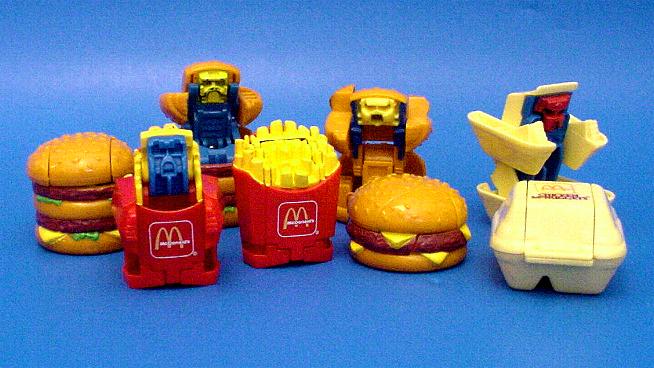The thought of toys being given out as part of children’s meal deals might be easier to swallow, and better for you, if the toys are part of a collectible set and tied to healthy, nutrition-rich food choices. Who says? Kids and their parents do.
The findings of a new study come during a time of debate over obesity in the United States — about one-third of adults are now obese, as are 17 percent of children ages 2-19, notes the Centers for Disease Control — and the growing belief that toys with fast-food meals only serve to put fatty, calorie-dense selections into the mouths of children.
Bans on toys with fast-food kids’ meals have sprung up in California and are under consideration in New York, as well as in other cities and regions, and even in South Africa. Anti-ban efforts to avoid such governmental bans are underway in Arizona and Florida.
Missing from the debate are hard data on the influences that meal-deals actually have on children, particularly preschool-aged ones, and whether toy offerings might be adjusted to encourage healthy eating, say researchers Anna McAlister of the University of Wisconsin-Madison and T. Bettina Cornwell of the University of Oregon.
Their study found that children — preschoolers, ages 2 to 5 — can be influenced to prefer a healthy food choice — in this case a meal of soup, mixed vegetables and milk — when a toy is seen as one that is missing from their collectible set. In addition, 73 percent of the participating parents reported that they would be OK with such an approach, whereas, 92 percent were strongly against the use of collectible toys with traditional, less-healthy fast-food meals.
“The study tells us that the inclusion of a collectible toy influences the children’s perceptions of how the food is going to taste, and whether they will like it,” said Cornwell, a professor of marketing in the University of Oregon Lundquist College of Business. “What was interesting to us — even more than we expected — was that the presence of the collectible toy moved the healthier food option up to the point that it was just as likable as the fast-food offering.”
The two-part study, appearing online ahead of regular publication in the Journal of Public Policy and Marketing, was conducted independently without support from industry or public funds.
In the first study, 85 preschoolers were shown cards with 18 different food images, all depicting foods not directly associated with known meals offered by any particular restaurant. Six of the meal combinations presented among distracting choices were two sets of three experimental choices: One set offered a heavily topped personal pizza, a side of fries and a small soda, paired with either no toy, a toy truck defined as non-collectible or a previously defined collectible monster; the other set featured the soup, veggies and milk with the same three types of toys.
The toys, all about 1.5 inches tall, used in the study were chosen from among 11 possibilities in pre-testing to assure their appeal among children, whose age group generally is not tuned in to gender-specific toys. The trucks and monsters rose to the top with both boys and girls.
The study considered children’s preferences. As a child learned that certain meals would contain a collectible toy that he or she did not have yet, the anticipated taste and likability of those meals increased. Meals without any toys were less desirable. Those with collectible toys were the most appealing. When no-toy meals were shown, as expected, the fast-food offering was more positively regarded.
In the second experiment — with 56 different children, ages 3 to 5 — another toy was included. It was part of a collection but not one that the children needed to finish out their set since they already owned that particular one. Again, the children’s ratings of perceived taste and likability favored the meals with collectible toys and, in particular, those meals with a toy that they needed to complete their set.
“This finding is compelling,” Cornwell said. “It speaks to a child’s motivation to collect and to the potential of repeated food offerings to influence the development of taste preferences.”
“The studies back up a growing body of evidence that children’s perceptions and food choices can be guided through the repeated exposure of certain types of food,” said McAlister, a developmental psychologist in the University of Wisconsin School of Human Ecology.
“There is a good deal of debate about whether toys influence a child’s perception of a food,” Cornwell said. “These studies certainly support the idea that the presence of a toy in a meal deal can influence a child’s perception on how that food is going to taste — and how they are going to like it.”
About the University of Oregon
The University of Oregon is among the 108 institutions chosen from 4,633 U.S. universities for top-tier designation of “Very High Research Activity” in the 2010 Carnegie Classification of Institutions of Higher Education. The UO also is one of two Pacific Northwest members of the Association of American Universities.
Media Contact: Jim Barlow, director of science and research communications, 541-346-3481, [email protected]
Sources: T. Bettina Cornwell, Edwin E. & June Woldt Cone Professor of Marketing and director of research for the Warsaw Sports Marketing Center, 541-346-8241, [email protected] ; Anna McAllister, University of Wisconsin-Madison, 734-355-3758, [email protected]


